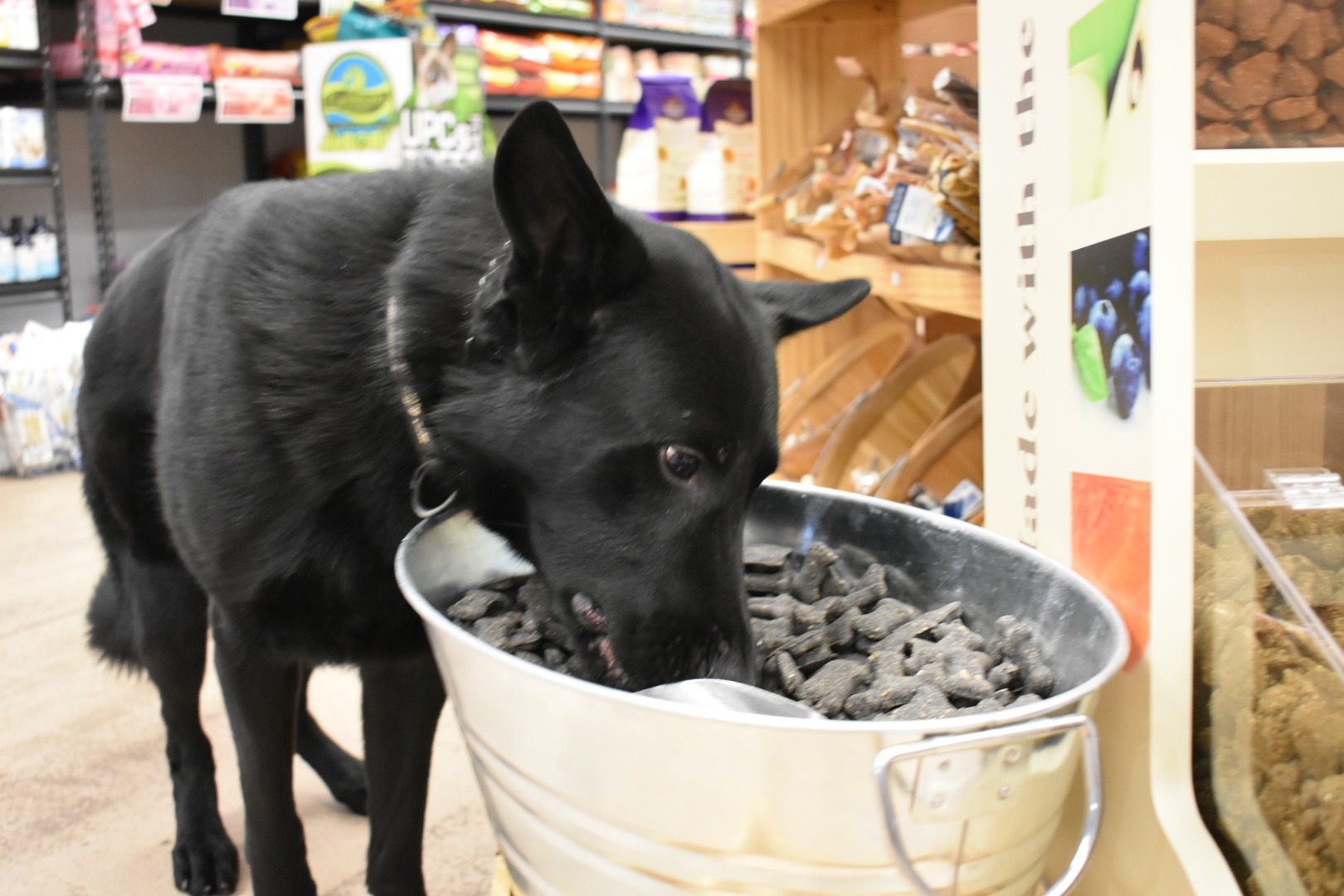You go to the store and purchase pet food, bring it home, pour it into a plastic bin with a lid – toss the bag away and go about feeding your pet for the next few weeks or even months. This a dangerous practice for so many reasons, and most pet parents are completely unaware! Fortunately, we’ve taken an evidence-based approach to why we should avoid the use of bins, or ways we can make their use safer.
What Exactly Does Rancid Mean?
Once pet food is exposed to oxygen it oxidizes – another word for rancid. Yuck! In addition to that, the nutritional value after just 3 weeks of being open. Even in a storage bin, nutritional value still declines, arguably faster than if the food was left in the bag. Heat, light and humidity have a lot to do with how long food lasts. The hotter and more humid a climate is, the shorter it lasts.
One of the most dangerous, and unfortunately most common practices is for pet owners to purchase high quality and often times expensive dog food in packaging made to keep the food fresh only to go home, tear open the bag and pour it directly into a plastic pet food bin.
Why are bins one of the worst health hazards to our pets?
The animal fats, vegetable fats and marine oils in pet food actually settle into the bottom and sides of that bin and become rancid. These oils can be very difficult to remove from the bin, despite washing and can contaminate new pet food. Sometimes these oils can be removed with harsh cleaning products, however these products accelerate degradation the plastic even further – leaching dangerous chemicals into the food. On the other hand, leaving the oils in contact with the plastic over time can also degrade the plastic which leads us to our next problem.
Plastic bins are generally made of polycarbonate plastics, which make up most containers that store many food and beverages that we have become so accustomed to. Additionally, many of these plastic pet food bins come from China, and it is not always clear what other toxins may be lurking in those bins. The BPA’s that are found in polycarbonate plastics, in addition to other harmful chemicals seep into the pet food and become harmful and very toxic over time. Ever wonder why sometimes your pet may not want to eat the food as you begin to get toward the bottom of the bin?
– Bisphenol A (BPA) is found in nearly all plastics. BPA is a potent endocrine disruptor, which is a chemical that can cause serious developmental, neurological and reproductive health effects. BPA is known to mimic estrogens, which bind to the exact same receptors as female hormones do. Researchers are split on the health hazards to humans, however they do all agree that even short periods of BPA exposure to animals can have permanent effects. Interestingly, BPA does not need to remain in an animals’ body to have an effect. Further health problems for pets can include breast and prostate cancer, diabetes, obesity, hyperactivity, impaired immune function, increased aggression etc.
BPA-FREE Products Are Not Free of Danger
In fact, they are even more dangerous. These products have been shown to release synthetic estrogens that are even more potent than BPA. The belief used to be that BPA and other estrogen-like chemicals had to be heated in a dishwasher or microwave or exposed to ultraviolet light to leach the chemicals, however research now shows that these chemicals are released even when plastics are not exposed to these harsh conditions.
If this was not concerning enough, plastic storage bins also increase the risk of storage mites, mold growth, bacterial contamination which leads to food poisoning, vomiting and/or diarrhea. O
Keep the Original Packaging: Including UPC, Lot & Date Codes!
Store ALL dry pet food in their original bags. Many manufactures spend an incredible amount of time and money into the technology of their bags. Many packages have zipping mechanisms to close and seal the food bags as well as keep oxygen out and food fresher. In addition, if an illness or recall pops up, without the original packaging and lot identifiers it becomes nearly impossible to trace the food, or potential contaminants.
If you chose to use storage containers, whether they be plastic or other materials, always keep the food in the original packaging and then place it into the bin. This gives you immediate access to lot numbers and dates in case of a recall, or if your pet becomes ill. Between each bag always wash the bin with warm (not hot) water, a high-quality dishwashing detergent and rinse well. Ensure the bin is completely dry before placing any pet food bags in the bin.

